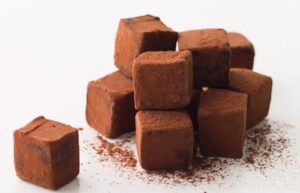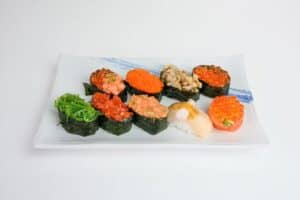Handa Somen is a traditional Japanese noodle with a rich history and unique characteristics that set it apart from other somen varieties. Renowned for its slightly thicker and chewier texture, Handa noodles has been a beloved local specialty in Tokushima Prefecture. This article delves into the fascinating origins, meticulous production methods, and cultural significance of Handa Somen, highlighting why it stands out as a culinary gem.
What is Handa Somen?

Handa somen is renowned for its thicker noodles. Although Japanese Agricultural Standards (JAS) classify noodles by thickness and typically label Handa hand-stretched somen as “hiyamugi,” the long-standing tradition and regional noodle culture dating back to the Edo period. Another characteristic of Handa noodles, along with their firmness and smooth texture, is the thickness of the noodles. While regular somen noodles are less than 1.3 mm in diameter, Handa noodles are about 1.4 to 1.6 mm in diameter.
Home to Noodle Factories – Handa

Handa, Tsurugi Town is home to many noodle factories, some of which are situated at altitudes nearly 300 meters apart. This variation in altitude leads to slight differences in the amount of salt and water used, as well as maturation and drying times, resulting in each factory’s hand-pulled somen having its own unique flavor. Each factory carefully selects the type of wheat, its ratio, and the salt used.
Handa Somen History

Handa somen has a rich history spanning 200 years. The origins of Handa noodles are varied, but it is believed that during the mid-Edo period, the secret method of making these noodles was passed down by riverboat men who transported goods from Tokushima to Asue, Mima, and the Miyoshi region. This method, combined with Handa’s ideal climate for noodle making, eventually established Handa somen as a local industry.
The cold winds from the Shikoku Mountains, the clear waters of the Yoshino River, and high-quality wheat contribute to the excellence of Handa noodles. This product is renowned nationwide for its quality and unforgettable taste. This dish is characterized by its slightly thick and chewy texture, celebrated in the Handa Somen Ondo song: “The firmness of the noodles will make your throat sing.”
Handa Somen FAQ
- What is the trick in making Handa Somen?
Handa noodles are unique in that they do not get soggy even when boiled or fried in a hot pot during the cold season, allowing you to enjoy the delicious flavor of the noodles. The trick is how you boil them. When eating them cold, boil them for 6 minutes as instructed, but when cooking them hot, boil them for 5 minutes as you will be reheating them.
- What is the texture of Handa Noodles?
The slightly firm noodles soak up the broth just right when boiled, and the taste of the broth and the wheat flavor spreads with each bite, giving them a chewy texture and a smooth texture.
Handa Somen Recipe

Handa Somen Ingredients
| Ingredients for 4 persons | Measurements |
|---|---|
| Somen | 320g |
| Kamaboko (fish cake) | 80g |
| Dried shiitake mushrooms | 40g |
| Shiitake mushroom soaking liquid | 100g |
| White sugar | 13g |
| Dark soy sauce | 7g |
| Egg | 60g |
| Salt | 2g |
| White sugar (for egg) | 4g |
| Salad oil | 3g |
| Green onion | 20g |
| Ginger | 20g |
| Green shiso | 16g |
| Dipping Sauce: | |
| Dashi stock | 400g |
| Light soy sauce | 80g |
| Mirin | 80g |
How to make Handa Somen?
Slice the kamaboko (fish cake) thinly. Set aside for later use.
Soak the shiitake mushrooms in water until they are rehydrated. Then, simmer them in the soaking water with sugar and dark soy sauce to create a sweet and spicy sauce.
Beat the eggs and add a pinch of salt and sugar. Heat a frying pan with a little salad oil and cook the eggs into a thin omelet. Once cooked, cut the omelet into 4-5cm pieces to create shredded egg strips.
Chop the green onions into small pieces, starting from the small ends. Peel and grate the ginger, then cut the green shiso and myoga into thin strips. Slice the sudachi citrus into rounds.
Make the dipping sauce by evaporating the alcohol from the mirin in a pot, then adding dashi stock and light soy sauce. Bring to a boil, cool, and chill in the refrigerator. Break up the somen noodles and boil them in plenty of water. After boiling, transfer to cold water, rinse to remove slime and oil, then drain. Place the noodles in a bowl, garnish with the prepared toppings, and serve with the chilled dipping sauce on the side.
Where to buy Handa Somen?
Handa Tenobe Somen Union (半田手延べそうめん協同組合)

You can purchase products from our association member businesses, including our association brand Handa Handa Hand-Stretched Somen “Nyukon.” They will also guide you to the noodle factories of our member businesses, so please feel free to stop by if you are in the area.
Final Thoughts

Handa Somen is more than just a food; it’s a symbol of tradition and culture, cherished for over two centuries. We encourage you to delve further into the world of this dish and experience its distinctive flavors firsthand.
Some of the dishes related to Somen Noodles.
















Comments